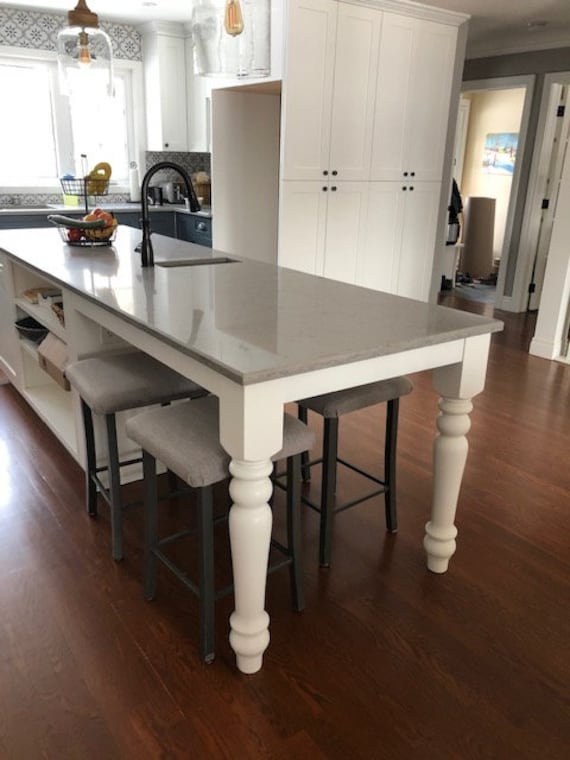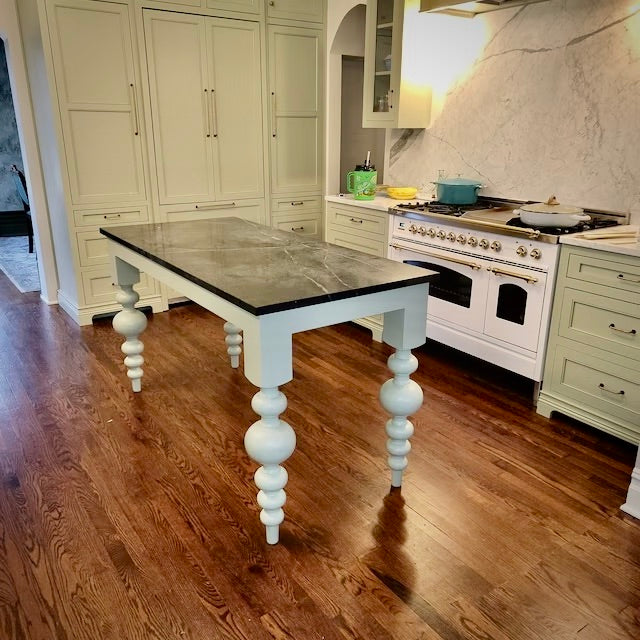A Comprehensive Guide to Selecting the Right Kitchen Island Leg
A Comprehensive Guide to Selecting the Right Kitchen Island Leg
Blog Article
The Importance of a Sturdy Cooking Area Island Leg in Developing a Functional Food Preparation Location
A sturdy kitchen island leg works as an essential component in developing a useful cooking environment, offering needed support for both the kitchen counter and numerous kitchen activities. The stability it supplies can substantially lower the threat of crashes in high-traffic locations, while additionally adding to the total visual comprehensibility of the room. As cooking areas evolve right into multifunctional locations for food preparation, eating, and socializing, the selection of products and layout factors to consider for island legs becomes significantly essential. Comprehending these elements can transform your kitchen area right into a safer and much more efficient area, motivating further exploration into the most effective alternatives offered.
Benefits of Sturdy Island Legs
Supplying essential assistance, durable cooking area island legs play a critical function in boosting the performance and durability of kitchen islands - kitchen island leg. These legs not just birth the weight of the kitchen counter and any kind of extra items positioned on the island, yet additionally add to the total security of the structure. A well-supported kitchen area island guarantees that it stays upright and functional, also under heavy usage, which is particularly important in active kitchen environments
In addition, strong island legs can enhance the visual allure of the kitchen area. They supply a strong framework that can enhance numerous design styles, from contemporary to conventional. This convenience enables house owners to tailor their cooking area islands according to individual taste while making certain that the structural stability remains uncompromised.
In enhancement to their supportive function, robust kitchen island legs can additionally enhance safety. A steady island decreases the threat of crashes triggered by wobbling or tipping, which is specifically critical in houses with children or elderly people. Solid legs can promote a seamless flow of tasks, allowing for effective meal preparation and social interactions within the kitchen area space. Ultimately, purchasing sturdy kitchen island legs is essential for a useful and aesthetically pleasing cooking location.
Materials for Cooking Area Island Legs
When choosing products for cooking area island legs, resilience and visual allure are crucial elements to consider,. One of the most typical materials consist of wood, steel, and crafted wood, each offering one-of-a-kind benefits.
Wood, such as cherry, oak, or maple, is a timeless option as a result of its strength and timeless beauty (kitchen island leg). It can stand up to significant weight and is immune to wear, making it excellent for high-use kitchen atmospheres. In addition, wood can be stained or repainted to enhance numerous cooking area designs
Metal legs, typically crafted from stainless-steel or wrought iron, give a modern-day and industrial look. They are exceptionally strong and can sustain significant loads while being resistant to wetness and heat, which is beneficial in a cooking location. Metal legs can also be quickly cleaned up, improving their usefulness.

Layout Considerations for Security
The choice of products for kitchen area island legs straight affects the design factors to consider for security. When developing a kitchen area island, it is critical to examine the weight-bearing ability of the picked materials. Much heavier products, such as solid timber or steel, generally give higher security, specifically under the stress and anxiety of everyday Learn More usage.
In addition, the leg style must include appropriate geometry to improve stability. A wider base boosts the assistance area, minimizing the danger of wobbling or tipping. Consideration must also be offered to the elevation of the legs; out of proportion leg sizes can cause inequality, jeopardizing the overall stability of the island.
Furthermore, the circulation of weight across the island is vital. Guaranteeing that the leg positioning lines up with the heaviest components, such as countertops and devices, will better enhance security.
Maintenance Tips for Longevity

Depending on the material of the legs-- whether timber, metal, or composite-- proper cleansing techniques should be utilized. Steel legs may require a light polish to prevent rust and keep their appeal.
Additionally, tightening up screws and screws consistently can make sure stability and stop tottering. Consider enhancing the legs with additional brackets or supports to boost resilience if the kitchen island experiences heavy usage. Using a safety surface or sealant can secure against wetness and stains, lengthening the lifespan of blog the legs. By following these maintenance pointers, home owners can guarantee their kitchen island legs stay durable and functional for years to find.
Picking the Right Leg Style
Regular upkeep makes sure that cooking area island legs remain strong and practical, but picking the best leg style is similarly crucial for both aesthetics and support. The choice of leg style can considerably influence the total layout and consistency of your cooking area.

Functionality is another vital aspect. Thicker legs or those with a durable base can sustain larger countertops and equipment, improving the island's energy. Conversely, slender legs might produce an airy look, suitable for lighter designs yet possibly much less helpful.
Final Thought
In recap, the relevance of sturdy kitchen area island legs can not be overstated in the production of a functional food preparation location. These legs offer important assistance, improve stability, and add to the overall aesthetic of the kitchen area.
A durable cooking area island leg serves as a fundamental element in establishing a practical cooking setting, offering essential support for both the countertop and different kitchen area tasks.Offering essential support, tough kitchen area island legs play a crucial role in boosting the functionality and durability of kitchen area islands. Inevitably, investing in strong kitchen island legs is vital for a useful and visually pleasing cooking area.
Factor to consider should likewise be offered to the elevation of the legs; disproportionate leg sizes can lead to inequality, compromising the general security of the island.
Wood legs offer heat and a classic look, while steel legs supply a modern and industrial feel.
Report this page